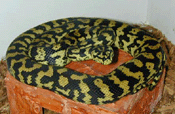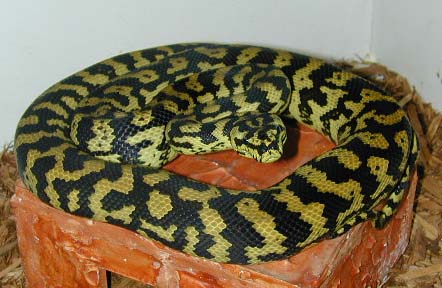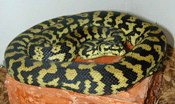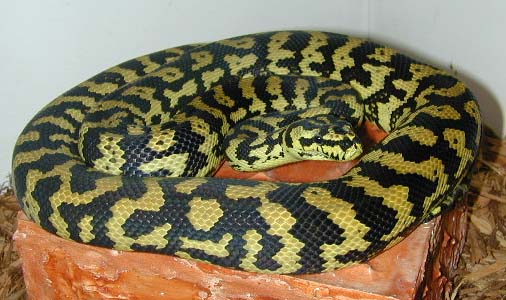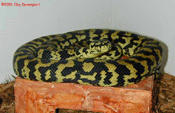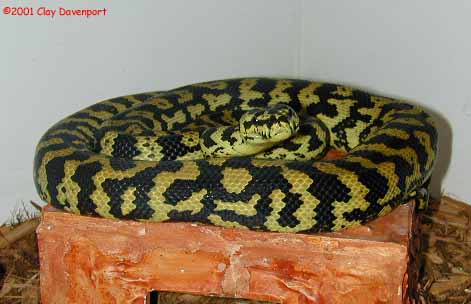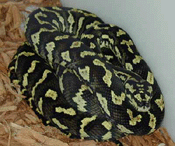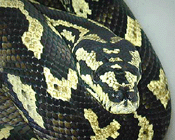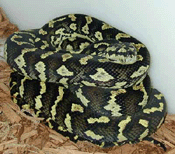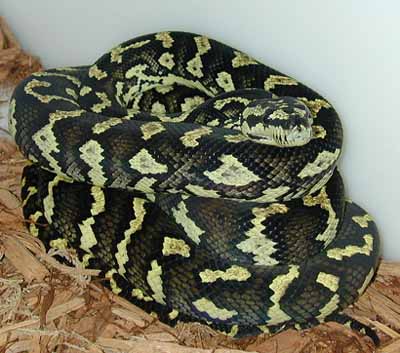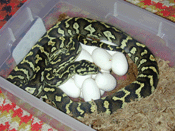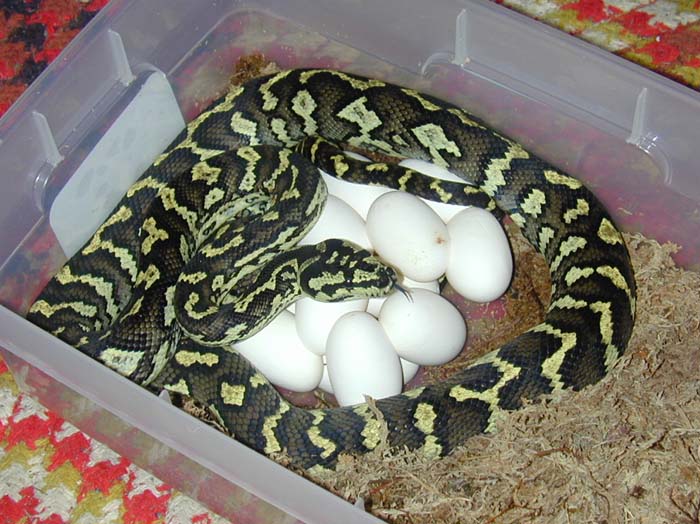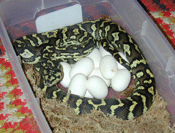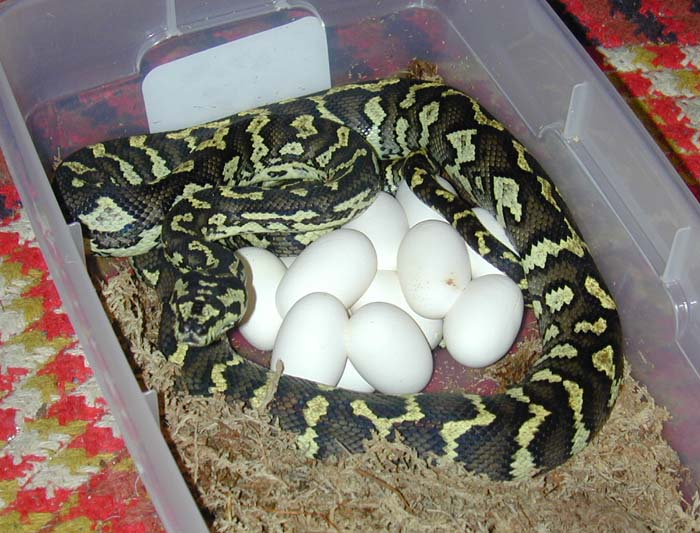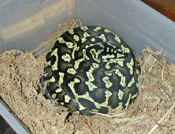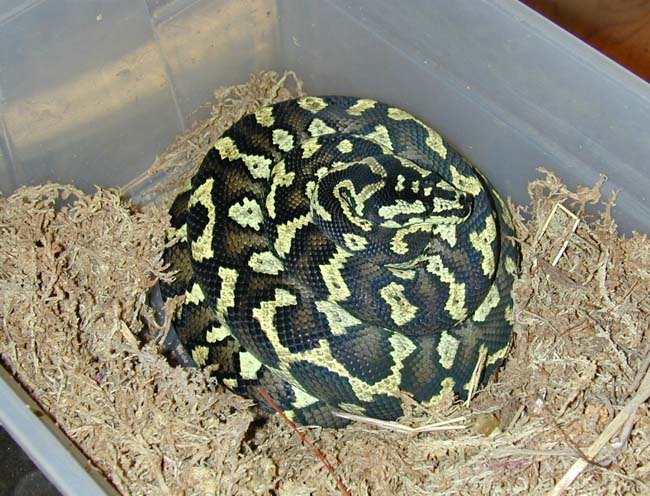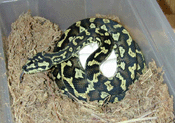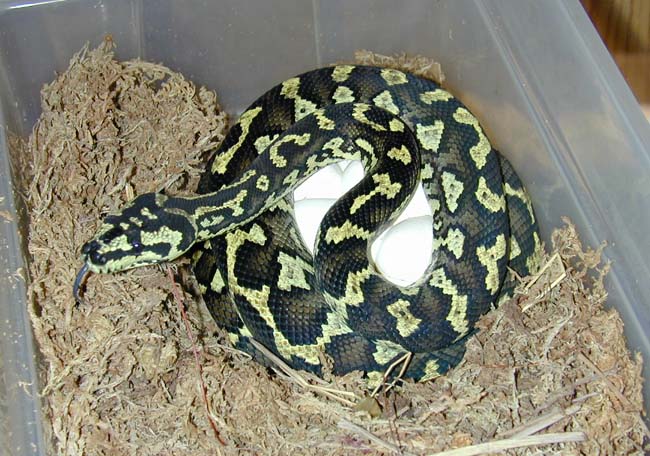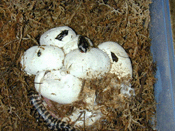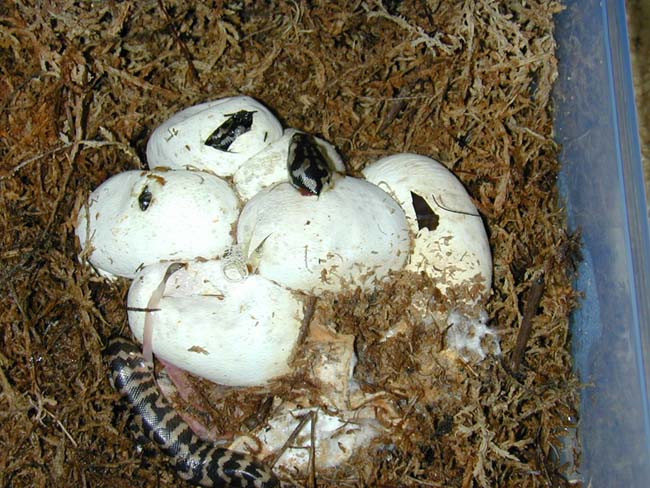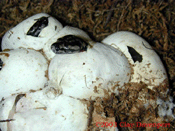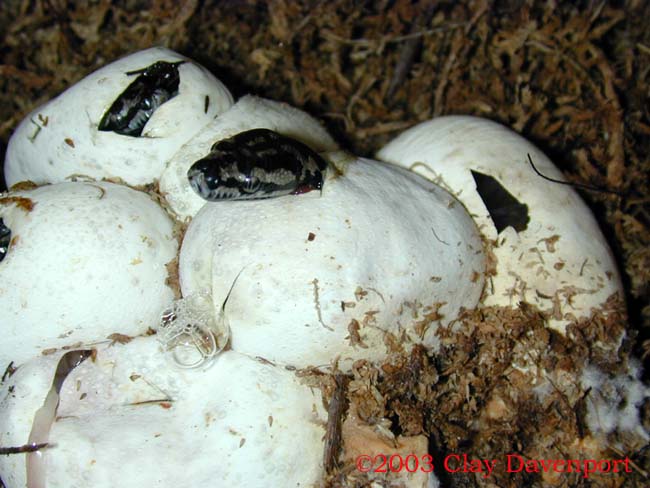Jungle Carpet Pythons
(Morelia spilota cheynei)
Temperment: Docile but nippy as hatchlings
Size: 5-7 feet
Experience level: Intermediate

The jungle carpets are one of my favorites in the Morelia genus. They display a significant variation in both color and pattern. As hatchlings however, they are more dull in coloration. The color develops slowly and normally peaks at about 2 years of age. Some adults remain stunning animals far into their older years.
Due to the color change with age you cannot accutately determine what one of these snakes will look like as an adult. When looking for a quality jungle carpet, you need to look at the parents. Often great looking adults will pass this on to their offspring. It doesn't always work out like that, but you greatly increase your chances of ending up with a trophy jungle carpet if you buy from top notch stock to begin with, while if you buy offspring from drab low quality parents you are almost assured of having the same looking animals when they're grown.
I bought my first Jungle carpets from the Barkers in 1997 for the princely sum (for me at the time) of $700. They were the offspring of the amazing male on the cover of their book "Pythons of the World Vol. 1" and were the most expensive reptile purchase I had made until that time. It took me 6 years before I finally reproduced them. Not that they're difficult to breed, it just took me that long to figure it out. When you're in the colubrid mentality, I discovered it can be tough at first converting that thinking to working with pythons.
Caging
This species is what I consider semi-arboreal. The hatchlings are much more so than adults. It is recommended that branches be provided, and they will spend quite a bit of time using them.
Most adult jungles can be housed comfortably in a 3x2 enclosure. The really large ones though will benefit from a 4x2 cage. I like at least 18 inches of height in the cage to provide opportunities for climbing.
Temperature range should be 80-90°F during the non breeding season with moderate humidity. Shedding problems are uncommon with this species, but humidity should be kept a little higher during the shed cycles.
Feeding
Feeding jungle carpets is straightforward. They present only one potential feeding difficulty and almost never refuse a meal unless in shed or gravid. Many will feed even in shed.
I start hatchlings on live pinks and gradually increase the prey size until they are taking crawler mice then start switching them to dead prey.
The one potential problem I mentioned is the possibility of imprinting them on mice. I begin switching jungles over to rats as soon as they are large enough to take rat pinks. It's not guaranteed that they will imprint or anything if you continue feeding mice, but the potential exists.
I once had a pair I traded for as adults that were 7 and 8 feet long and imprinted on mice. One just flatly ignored any rat offered, and the other would actually recoil from a rat like a kid from boiled cabbage. They would down a dozen large mice each at every meal and that got old fairly quickly. After my experience with them I started putting much more emphasis on switching them to rats at a young age so that wouldn't happen again.
Attitude
Jungles have a bit more attitude than some pythons, and not as much as others. As hatchlings they are quite prone to defensive behavior and usually bite with little provocation. My wife laughs and says she can always tell when I'm sexing baby jungle carpets by the repeated exclamations of "ouch dammit" coming from the snake room.
They usually begin to grow out of this biting phase by about 6 months of age with regular gentle handling at which point it takes a little more effort to get them to bite. As adults though they can be quite calm snakes if they have been handled regularly as they matured. I'm not one to handle my snakes very often, so mine have grown up with a minimum of handling. They are still not prone to bite, but they do like to lunge at you with a closed mouth acting like they will. They possess a nice set of teeth, so this action usually has the intended effect of making my heart pause a beat in anticipation of the bite.
Jungles are not placid lazy snakes like some pythons, but neither are they actually agressive either. Their temperment is part of what makes them so interesting.
Jungle carpets have become a mainstay with snake keepers and breeding has become much more focused on improving the color and pattern. Today there are some absolutely stunning examples of the species in various collections across the country. They are an enjoyable snake to keep and I do not see their popularity declining in the future.
Here's a few pictures of a female with eggs from a couple of different breedings as well as some hatchlings starting to emerge.





